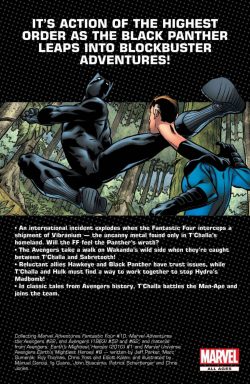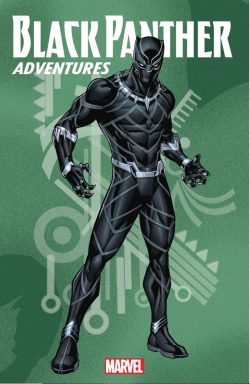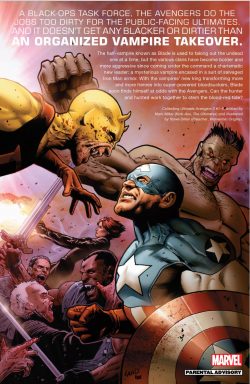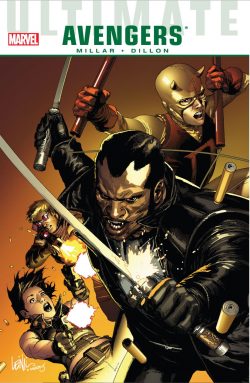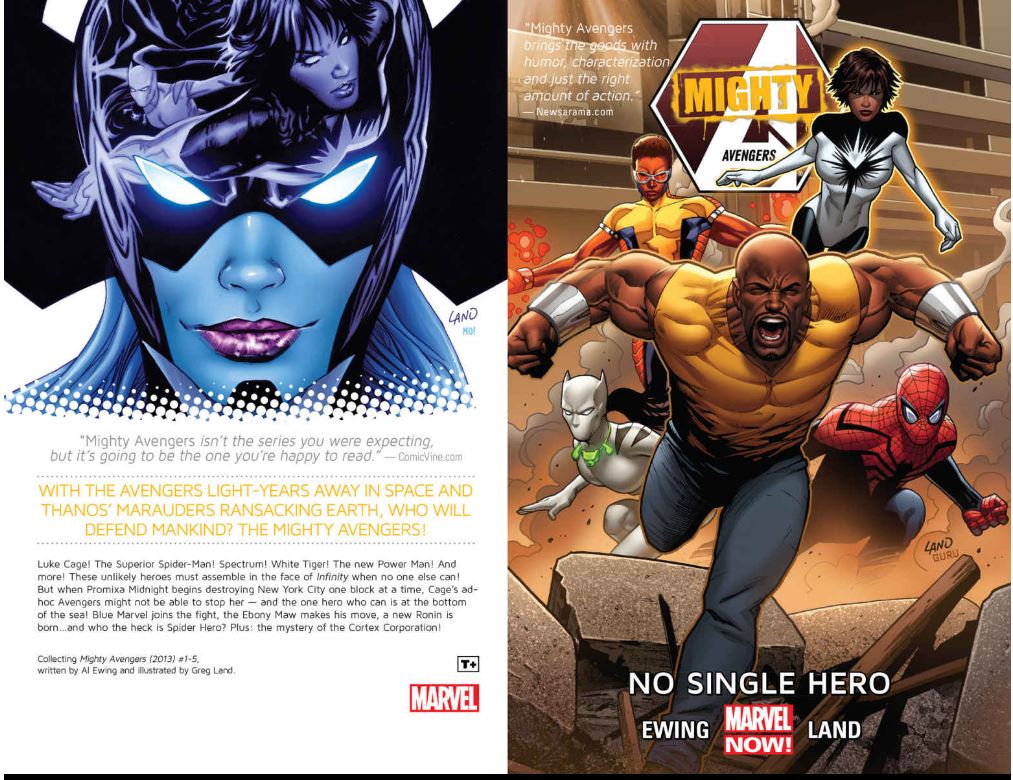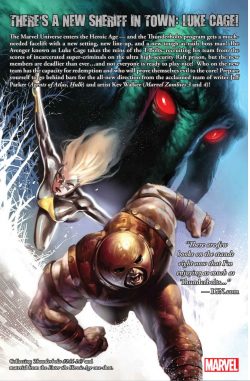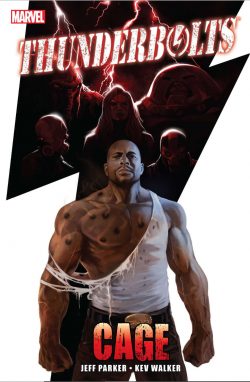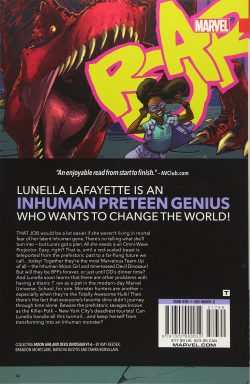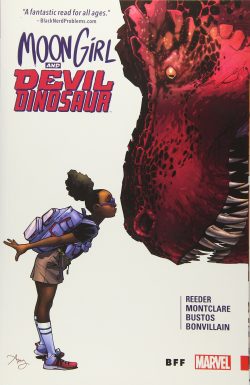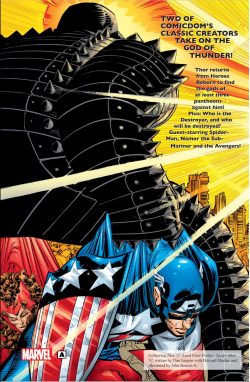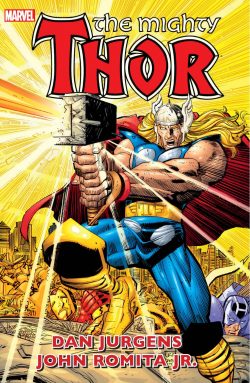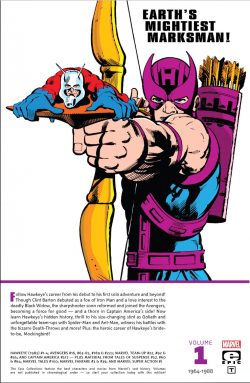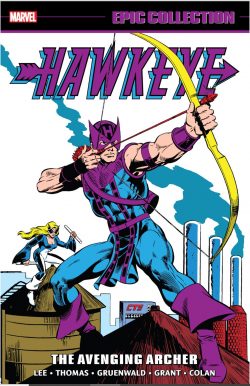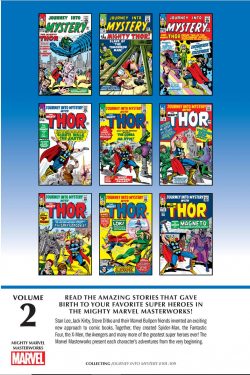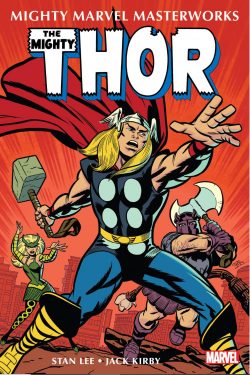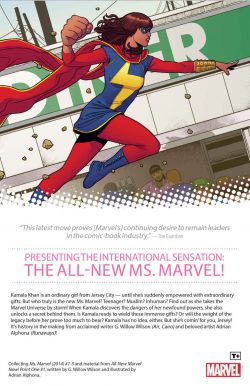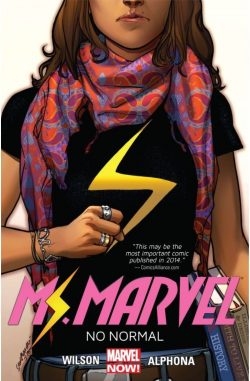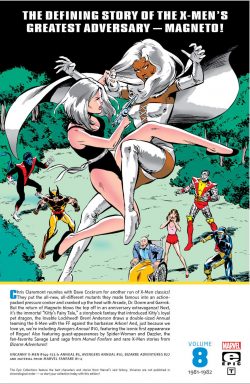
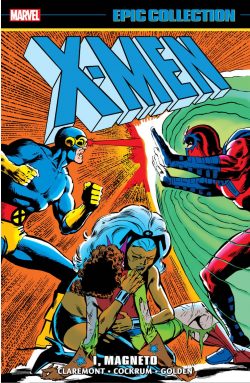
By Chris Claremont, Jo Duffy, Bob Layton, Dace Cockrum, Michael Golden, Brent Anderson, Paul Smith, Jim Sherman, Bob McLeod, John Buscema, George Pérez & various (Marvel)
ISBN: 978-1-3029-2952-7 (TPB/Digital edition)
In 1963, The X-Men #1 introduced Scott (Cyclops) Summers, Jean (Marvel Girl) Grey, Bobby (Iceman) Drake, Warren (Angel) Worthington III and Hank (The Beast) McCoy: unique students of Professor Charles Xavier. Their teacher was a wheelchair-bound telepath dedicated to brokering peace and integration between the masses of humanity and the emergent off-shoot race of mutants dubbed Homo superior; considered by many who knew him as a living saint.
After eight years of eccentrically amazing adventures, the mutant misfits almost disappeared at the beginning of 1970 during another periodic downturn in superhero comics sales. Just as in the 1940s, mystery men faded away whilst traditional genres – especially supernatural yarns – dominated entertainment fields. The title returned at year’s end as a reprint vehicle, and the missing mutants became perennial guest-stars and bit-players throughout the Marvel Universe. The Beast was suitably refashioned as a monster fit for the global uptick in scary stories…
Everything changed again in 1975 when Len Wein & Dave Cockrum revived and reordered the Mutant mystique via a brand-new team in Giant Size X-Men #1. Old foes-turned-friends Banshee and Sunfire joined one-shot Hulk hunter Wolverine and original creations Kurt Wagner (a demonic German teleporter codenamed Nightcrawler), African weather “goddess” Ororo Monroe – AKA Storm, Russian farmboy Peter Rasputin (who transformed into a living steel Colossus) and bitter, disillusioned Apache superman John Proudstar who was cajoled into joining the makeshift squad as Thunderbird.
The revision was an instant hit, with Wein’s editorial assistant Chris Claremont assuming the writer’s role from the second story onwards. The Uncanny X-Men reclaimed their comic book with #94, which soon became the company’s most popular – and highest quality – title.
After Thunderbird became the team’s first fatality, the survivors slowly bonded, becoming an unparalleled fighting unit under the brusquely draconian supervision of Cyclops. Cockrum was succeeded by John Byrne and as the team roster changed, the series scaled even greater heights, culminating in the landmark Dark Phoenix storyline which saw the death of arguably the book’s most beloved, imaginative and powerful character.
In the aftermath, team leader Cyclops left but the epic cosmic saga also seemed to fracture the groundbreaking working relationship of Claremont & Byrne. Within months they went their separate ways: Claremont staying with mutants whilst Byrne went on to establish his own reputation as a writer with series such as Alpha Flight, Incredible Hulk and especially his revolutionary reimagining of The Fantastic Four…
This comprehensive compilation is an ideal jumping-on point, perfect for newbies, neophytes and old lags nervous over re-reading these splendid yarns on fragile, extremely valuable newsprint paper. It celebrates a changing of the guard as the mutants consolidated their unstoppable march to market dominance through high-quality storytelling Seen here are issues #144-153 of the (latterly re-renamed “Uncanny”) X-Men; X-Men Annual #5, Avengers Annual #10 and material from Bizarre Adventures #27 and Marvel Fanfare #1-4, spanning April 1981-September 1982.
Scripted by Claremont and illustrated by Brent Anderson & Joseph Rubenstein the drama resumes with X-Men #144 as ‘Even in Death…’ finds heartbroken wanderer Scott Summers (who quit after the death of Jean Grey) fetching up in coastal village Shark Bay before joining the crew of a fishing boat.
Trouble is never far from Cyclops, however, and when captain Aletys Forester introduces him to her dad, Scott must draw upon all his inner reserves – and instinctive assistance of macabre swamp guardian Man-Thing – to repel crushing, soul-consuming psychic assaults from pernicious demon D’spayre, who has made the region his personal torture garden…
Cockrum returned to the team he co-created in #145, joining Claremont & Rubinstein in an extended clash of cultures as ‘Kidnapped!’ sees the X-Men targeted by Doctor Doom, thanks to the machinations of deranged assassin Arcade.
With Storm, Colossus, Angel, Wolverine and Nightcrawler invading the Diabolical Dictator’s castle, a substitute-squad consisting of Iceman, Polaris, Banshee and Havoc are despatched to the killer-for-hire’s mechanised ‘Murderworld!’ to rescue family and friends of the heroes, all previously kidnapped by Arcade. In the interim, Doom has defeated the invading X-Men of his castle, but his cruel act of entrapping claustrophobe Ororo has backfired, triggering a ‘Rogue Storm!’ that could erase the USA from the globe…
Issue #148 opens with Scott and Aletys shipwrecked on a recently reemergent island holding the remnants of a lost civilisation, but the main event is a trip to Manhattan for 13-year-old X-Man Kitty Pryde, accompanied by Storm, Spider-Woman Jessica Drew and Dazzler Alison Blair. That’s lucky, since nomadic mutant empath Caliban calamitously attempts to abduct the child in ‘Cry, Mutant!’ by Claremont, Cockrum & Rubinstein…
A major menace resurfaces in #149 to threaten the shipwrecked couple, but the active X-Men are too busy to notice, dealing with resurrected demi-god Garokk and an erupting volcano in ‘And the Dead Shall Bury the Living!’ before all the varied plots converge in #150 (October 1981). Before that, though, there’s a crucial diversion that will affect and reshape the X-Men for years to come.
Crafted by Claremont, Michael Golden & Armando Gil, ‘By Friends… Betrayed!’ comes from Avengers Annual #10: seemingly closing the superhero career of Carol Danvers AKA Ms. Marvel. Powerless and stripped of her memories, Danvers is rescued from drowning by Spider-Woman, even as mutant shapeshifter Mystique launches an attack on the World’s Mightiest Superheroes to free her Brotherhood of Evil Mutants from jail.
It’s revealed that Danvers’ mind and abilities have been permanently stolen by a power-leaching teenager dubbed Rogue and in the aftermath of the assembled heroes defeating Mystique, the Avengers learn a horrific truth: how they had inadvertently surrendered their comrade Carol into the grip of a manipulative villain acting as the perfect husband…
Returning to the X-Men, the anniversary issue delivers extended epic ‘I, Magneto’ seeing the merciless, malevolent master of magnetism threaten all humanity. with Xavier’s team helpless to stop him… until a critical moment triggers an emotional crisis and awakening of the tortured villain’s long-suppressed humanity…
Claremont, Anderson & Bob McLeod then craft riotous intergalactic wonderment in X-Men Annual #5’s ‘Ou, La La…Badoon!’ When the Fantastic Four help an alien fugitive stranded in Manhattan they are in turn targeted by unsavoury, invisible lizard-men. Only Susan Richards escapes, fighting her way to Westchester to enlist the aid of the X-Men: combat veterans well acquainted with battling aliens.
The rescue mission starts with a stopover in the extradimensional realm of Arkon the Magnificent where the Badoon have already triumphed and where, amid much mayhem, the liberators overthrow the invaders and provide salvation for three worlds…
Chronologically adrift but sacrificed to a cohesive reading order, the contents of Marvel Fanfare #1-4 follow. Published between March and September 1982, the astounding saga was an elite yarn designed to launch a prestige format showcase of Marvel characters and talent. The new title featured slick paper stock, superior printing (all standard today) and a rolling brief to promote innovation and bold new directions.
Under Al Milgrom’s editorial guidance, numerous notable tales from exceptional creators were published, but cynical me – and not just me – soon noticed that many of those creators were ones who had problems with periodical publishing and couldn’t make fixed deadlines…
These day’s that’s nothing to shout over: comics come out when they do and editors have no real power to decree otherwise, but in the 1980s it was big deal, because printers booked a project for a pre-specified date, and charged punitive fees if publishers didn’t get product in on time. That’s why inventory tales were created: fill-ins that sat in a drawer until a writer blew it or an artist had his work eaten by the dog. Sometimes the US Mail simply lost completed stuff in transit…
Scripted by Claremont, and also including Milgrom’s humorous ‘Editor-Al’ intro pages, Savage Land was collected in 1987 and again in 2002: uniting Spider-Man, Ka-Zar and a grab bag of X-Men in a spectacular return to that primordial paradise: an antediluvian repository beneath the South Pole where fantastic civilisations and dinosaurs fretfully co-exist.
Illustrated and coloured by Golden, it begins with a ‘Fast Descent into Hell!’ when distraught Tanya Anderssen tries to find her missing lover, last seen in that lost world. Disturbingly, the missing man is Karl Lykos, a troubled soul addicted to feeding on mutants and likely to become ghastly humanoid pteranosaur Sauron. Tanya’s only hope of saving him was via Warren Worthington III – publicly infamous as former/occasional X-Man The Angel.
The billionaire’s reluctant expedition to the Savage Land ultimately includes an embedded news team from the Daily Bugle, including photographer/trouble magnet Peter Parker, who quickly stumbles across a band of native evil mutants planning to conquer the outer world by creating mutant hybrids from human victims – like Spider-Man…
Second chapter ‘To Sacrifice my Soul…’ has Spidey and local hero Ka-Zar, the Jungle Lord, join forces to crush the mutation plot, inadvertently unleashing Sauron on the sub-polar world.
Golden’s stylish easy grace gave way to the slick, accomplished method of Dave Cockrum, & Bob McLeod for ‘Into the Land of Death…’ as X-Men Wolverine, Colossus, Nightcrawler and Storm join Angel to thwart the diabolical dinosaur man and his malign mutant allies, before legend-in-training Paul Smith – assisted by inker Terry Austin – stepped in to finish the epic in grand style and climactic action in ‘Lost Souls!’
We then pop back to November 1981 for X-Men #151 wherein Jim Sherman, McLeod & Rubinstein welcome back Cyclops and wave Kitty goodbye in ‘X-Men Minus One!’
Due to the manipulations of White Queen Emma Frost, the teenager’s parents withdraw their daughter from Xavier’s school to enrol her in the Massachusetts Academy which covertly operates as the Hellfire Club’s training camp for young recruits. However, the sinister scheme is even deeper than the X-Men fear, as telepath Frost switches bodies with Storm to further her plan to eradicate the mutant heroes.
What nobody seems to realise is that although Frost has gained Ororo’s weather powers, her victim now has her appearance, loyal henchmen and psionic powers. Despite the deployment of terrifying robotic Sentinels, the plot spectacularly fails in closing instalment ‘The Hellfire Gambit’, illustrated by McLeod & Rubinstein…
Cockrum was back for #153, adding layers of whimsy to the usual angst and melodrama as ‘Kitty’s Fairy Tale’ sees the X-Mansion under reconstruction and the teen back where she belongs. As repairs continue, she tells bedtime stories to Colossus’ baby sister Illyana: using her teammates as inspiration, she spins a beguiling yarn of fantastic space pirates…
The action closes with the contents of monochrome “mature-reader” magazine Bizarre Adventures #27 (July 1981) sharing untold tales under the umbrella heading of ‘Secret Lives of the X-Men’…
Preceded by editorial ‘Listen, I Knew the X-Men When…’ and ‘X-Men Data Log’ pages by illustrated by Cockrum, these are offbeat solo tales of our idiosyncratic stars, opening with Phoenix in ‘The Brides of Attuma’ by Claremont, John Buscema & Klaus Janson. Here the dear departed mutant’s sister Sara Grey recalls a past moment when they were abducted by an undersea barbarian and even then Jean proved to be more than any mortal could handle…
That’s followed by Iceman vignette ‘Winter Carnival’ by Mary Jo Duffy, Pérez & Alfredo Alcala, wherein Bobby Drake is embroiled in a college heist with potentially catastrophic consequences, before ‘Show me the way to go home…’ (Bob Layton, Duffy, Cockrum & Ricardo Villamonte) pits Nightcrawler against villainous teleporter the Vanisher in a light-hearted trans-dimensional romp involving warrior women, threats to the very nature of reality and gratuitous (male) nudity…
Extras include original art pages by Cockrum, Rubinstein, Anderson & McLeod; Cockrum’s cover to fanzine The X-Men Chronicles; Byrne & Austin’s cover for the X-men parody issue of Crazy (#82, January 1982) and John Buscema’s 1987 Savage Land collection.
For many fans these tales comprise a definitive high point for the X-Men. Rightly ranking amongst the greatest stories Marvel ever published, they remain supremely satisfying, groundbreaking and painfully intoxicating: an invaluable grounding in contemporary fights ‘n’ tights fiction no fan or casual reader can afford to ignore.
© 2021 MARVEL.
